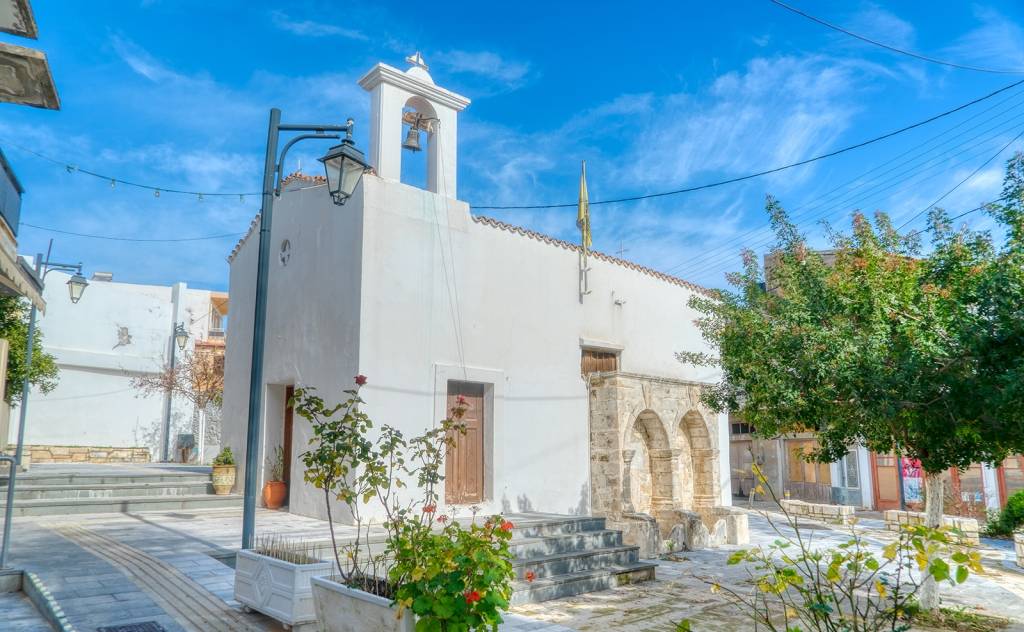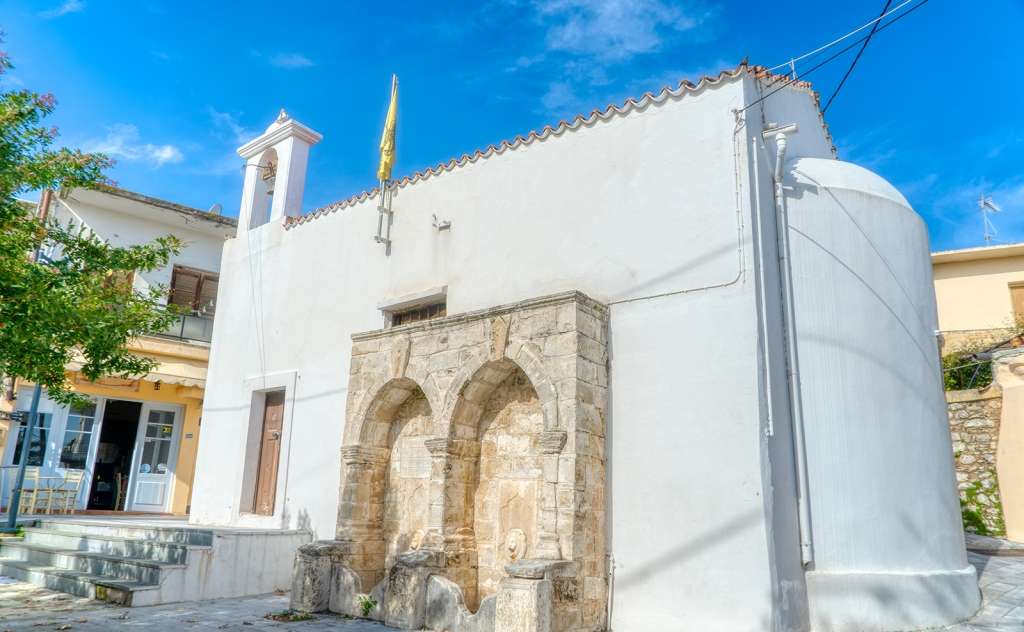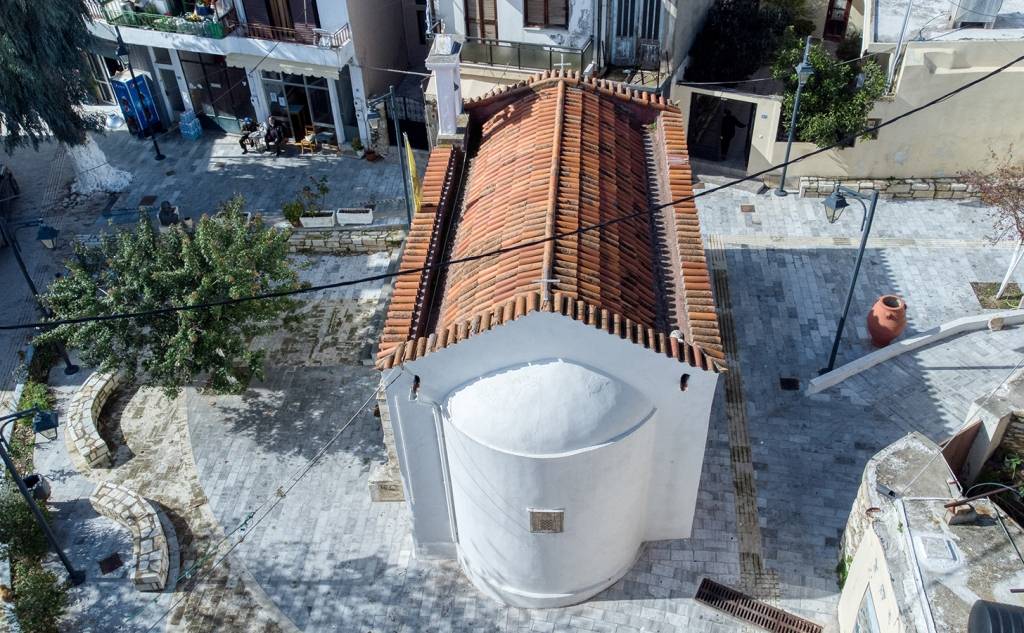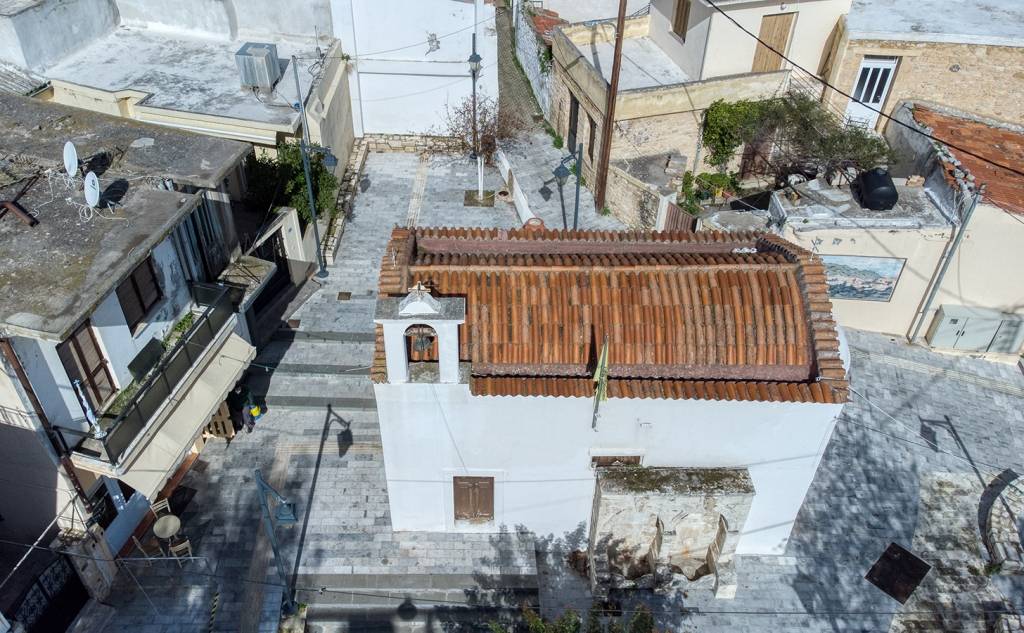Church of the Transfiguration of the Savior (Christ)
It is the oldest church in the village of Tylissos, which is 14 km from Heraklion.
More specifically, the one-room, vaulted church of Christ (Transfiguration of the Savior) is located in the old square of the village. The church has undergone alterations, while inside, it has an arcosolium (the owner'α burial monument) on the right. Directly opposite it, the second entrance seems to have additions as if there was a second arcosolium at this point. Some of the clay acoustic vessels that have been placed on the roof to enhance the acoustics of the temple are preserved in excellent condition.
On the south exterior wall, the visitor can see a restored fountain with an Arabic inscription, which dates back to the period of the Ottoman rule (19th century). A recess drum is formed in the front, which is crowned with two curved arches (bilateral arch). The ends of the arches rest on pillars (limestone pilasters), which have a pedestal and a nicely shaped base. Below the niche are the taps and, lower, the troughs.
The icons of the iconostasis date back to the 19th century, while the church has 14th-century frescoes that include many representations of the Virgin Mary's life (although the church is dedicated to Christ). The existence of so many figures of Holy Monks and Ascetics also makes an impression. This element states (according to folklorist Georgios Stamatakis) some relation of the church with the monastic world. The style of the murals is based on the colour contrast (chiaroscuro) for the rendering of the outline of the broadly lit faces. The shaping of the faces is soft, with low relief and calm lights, while the confused way the clothes are depicted is rendered with complementary colours and discreet use of lines. There are also some archaic elements, such as the elongation of the bodies and the firm shaping of the ears of Christ in the representation of the Infant, reminiscent of 13th-century frescoes. The two slingshots of the temple are also decorated, one with the figures of the Ten Saints and the second with the Prophets full-bodied.
Finally, in 1984, during the landscaping works of the square around the temple, tombs were found in front of the entrance and behind the sanctuary, which were left undisturbed. In 2013-2014, during the remodelling of the square, the tombs were opened by the Archaeological Service. The bones were removed from the inside, and the graves were covered with geotextile so as not to be damaged by the concrete.






